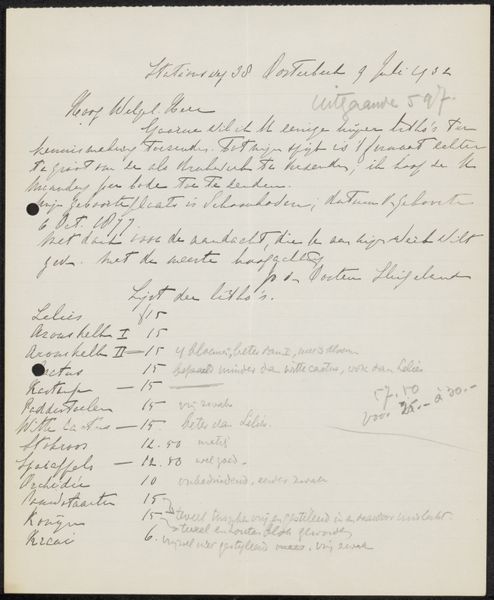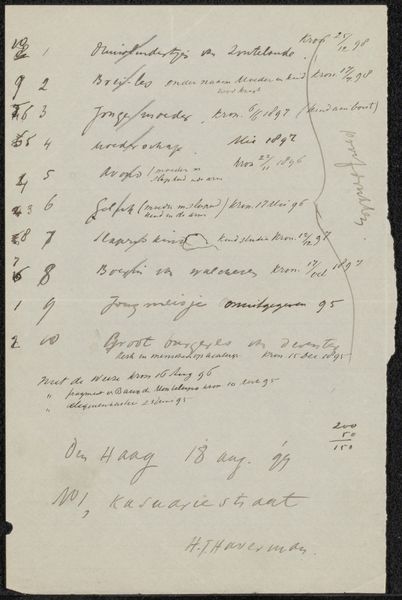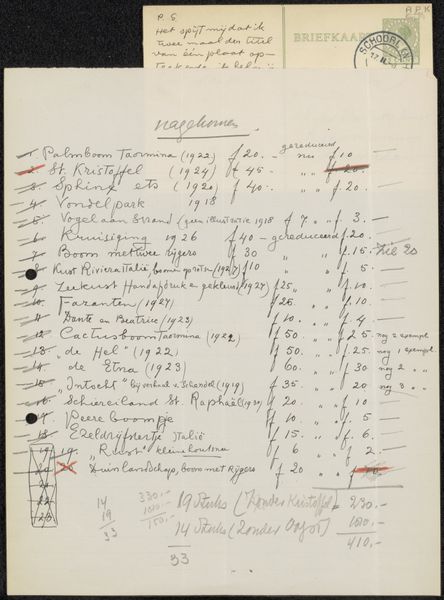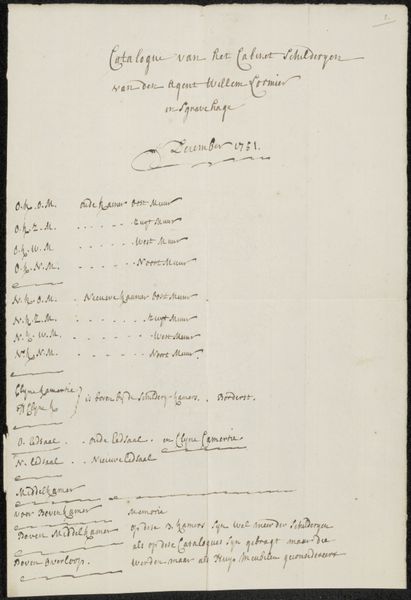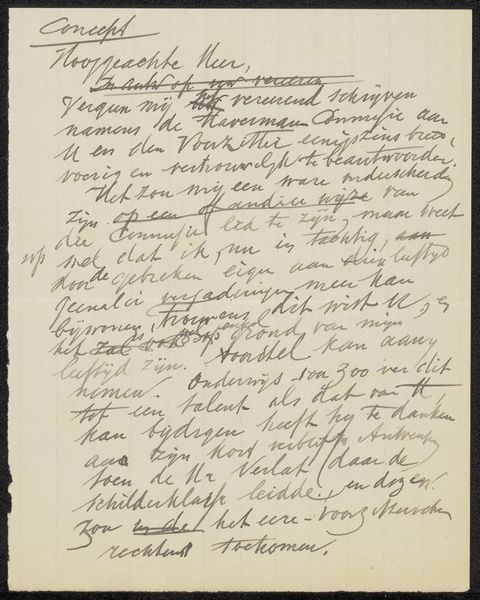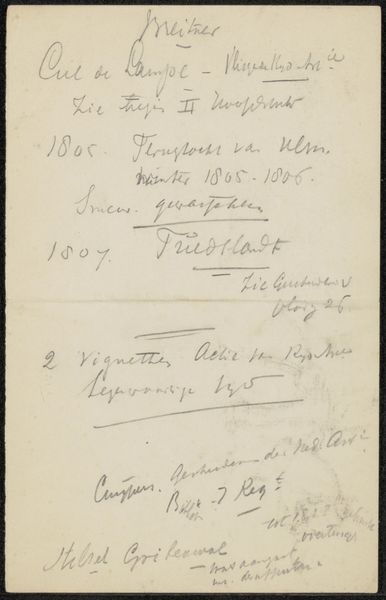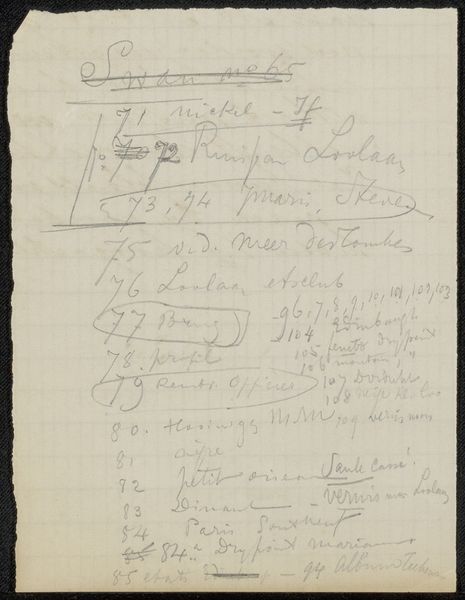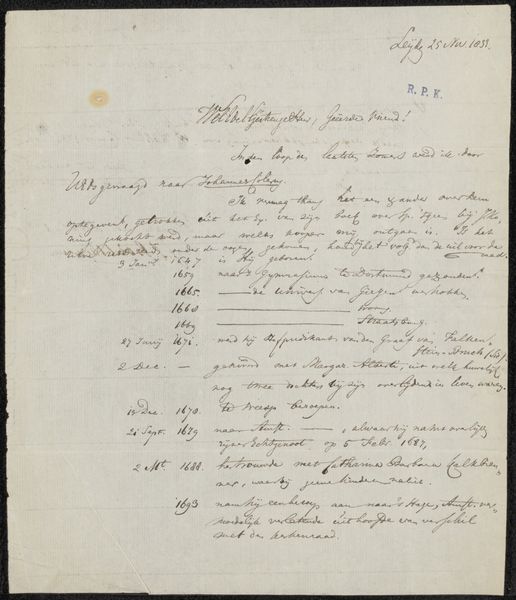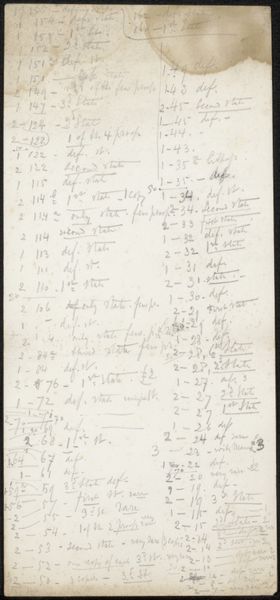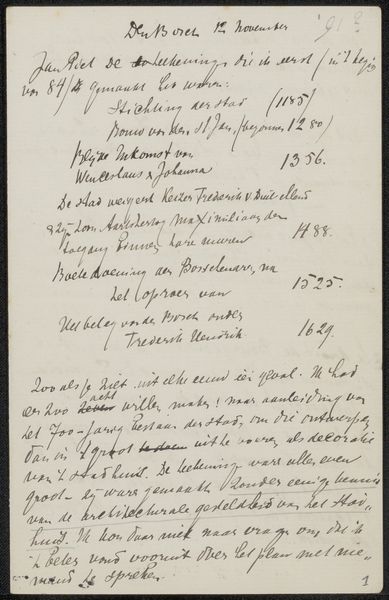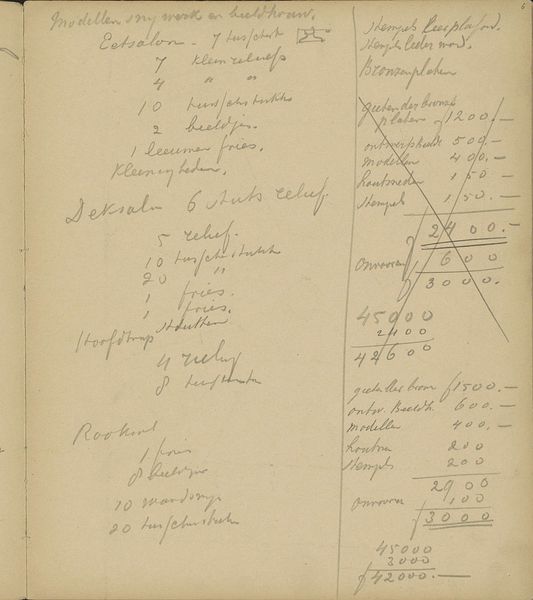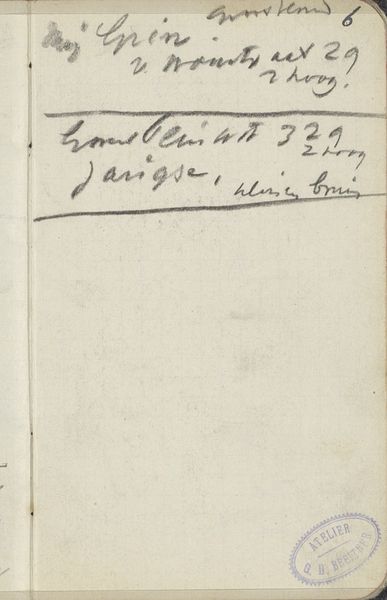
Brief aan Pieter Haverkorn van Rijsewijk 1851 - 1924
0:00
0:00
drawing, mixed-media, paper, ink
#
drawing
#
mixed-media
#
paper
#
ink
#
academic-art
#
calligraphy
Copyright: Rijks Museum: Open Domain
Curator: Before us is “Brief aan Pieter Haverkorn van Rijsewijk” by Carel Nicolaas Storm van 's-Gravesande. Dating from 1851-1924, this mixed-media drawing incorporates ink and paper. It's currently held at the Rijksmuseum. Editor: Wow, it's just a sheet filled with spidery writing and numbers. At first glance, it looks almost…scientific, like a botanist's notebook or something. What’s going on here? Curator: It’s a letter, or at least notes *for* a letter, addressed to Pieter Haverkorn van Rijsewijk. Look closely, it's actually a detailed inventory, likely of etchings. See the references to places like "Lagune by Chioggia" and "Vlissingen"? It reads almost like a catalog of locales inspiring Storm van 's-Gravesande's work. Editor: I see it now! A to-do list meets artistic log. There's a real charm in these private musings laid bare. I can imagine him scribbling away, fueled by strong coffee and even stronger artistic drive! The sheer volume of text—almost chaotic in its organization—suggests such a busy mind. Curator: Absolutely, and placing this work within the context of 19th-century artistic circles, the letter serves as a vital piece of documentation, mapping out networks of influence, aesthetic preferences, and production habits that shape our understanding of academic art. His use of Dutch to list these places further contextualizes it within the local culture and politics of the time. Editor: That's a good point. The piece is also oddly…universal, isn't it? Regardless of what language you speak, you still experience it as a record of a mind working. There’s something inherently relatable about seeing a creative process rendered this way. Curator: Exactly. While ostensibly a mundane listing, the letter underscores the networks and references implicit in art history. It demonstrates the social fabric from which "masterpieces" emerge, connecting individual practice to shared dialogues of identity and cultural memory. Editor: Well, looking at this collection of jottings has certainly given me a more human sense of the artistic period. Instead of viewing this artwork as purely objective historical reference, I now regard this letter to evoke in me some wonder on the complex creative mind of the writer and his dedication.
Comments
No comments
Be the first to comment and join the conversation on the ultimate creative platform.
